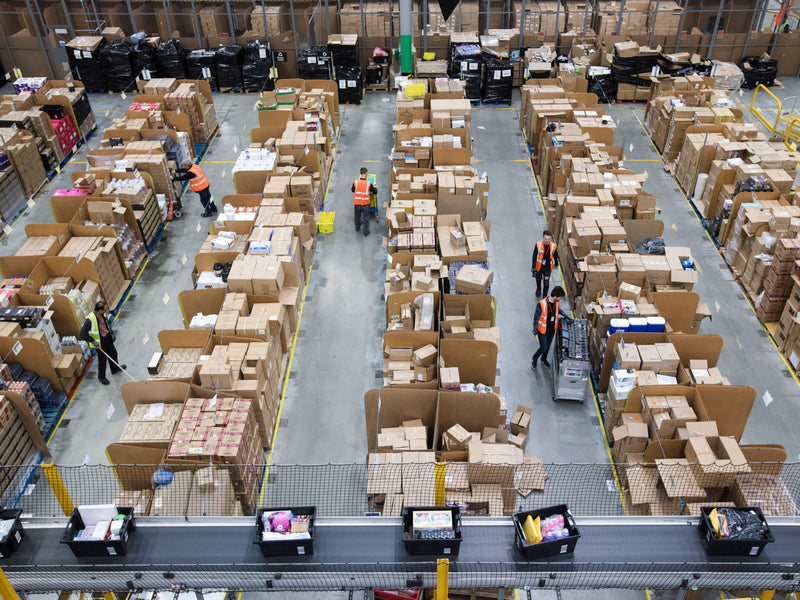A smooth returns process is a hallmark of modern eCommerce, yet every parcel that travels back through the network carries hidden costs. Transport emissions rise, packaging doubles, and unsold inventory piles into markdown or landfill. In 2024 the British Fashion Council put the UK returns bill at £7 billion and 350 000 tonnes of CO₂ from reverse-logistics journeys alone Vogue Business. Globally, researchers at Optoro estimate returns generate 24 million tonnes of CO₂ every year The Interline. For purpose-led brands and B Corp applicants these figures are reputational tripwires; for operators they are margin leaks.
At eComplete we handle millions of outbound and inbound units across beauty, wellness, apparel, and lifestyle categories. Our operator view is clear: returns do not have to be a black hole. When designed for circularity reverse logistics can recover up to 60 percent of product value, slice Scope 3 emissions, and lift customer lifetime value by proving that sustainability is lived, not just posted on social. This playbook turns theory into action.
The Returns Time Bomb: Scope and Impact
Returns rates hover between 15 and 40 percent for fashion and similar fit-sensitive categories Vogue Business. Each journey back to the warehouse adds transport emissions, duplicates packaging, and ties up cash in inventory that may never resell at full price. Vogue Business calculates that UK reverse logistics alone emits 350 000 tonnes of CO₂ annually, roughly the same as powering 43 000 homes for a year Vogue Business.
Environmental damage is matched by financial drag. A 2024 World Economic Forum paper warns that last-mile emissions will rise 60 percent by 2030 if current practices continue, driven largely by return traffic World Economic Forum. Our internal benchmarks show that for every pound spent processing a return, brands lose an additional £0.35 in hidden costs: repackaging, customer-service labour, and markdown.
Operator takeaway
Treat returns as an emissions category and a P&L line item. Both need hard KPIs, not just customer-service targets.
Reducing Returns at the Source
Before redesigning the reverse flow, cut unnecessary returns upstream.
Use data to predict and prevent. AI sizing widgets and fit-visualisation tools reduce fashion returns by up to 30 percent, according to the British Fashion Council’s 10-step plan Vogue Business. Feeding size-and-fit feedback loops into merchandising lowers mis-picks and poor product-page descriptions—the top two return drivers.
Deploy smart content. High-resolution imagery, 360-degree spins, and AR overlays cut bracketing behaviour that fuels haul culture. Post-purchase surveys from a health-supplement brand we manage showed a 12-point drop in “product not as described” returns after adding video instructions and real-size graphics.
Incentivise retention. Reward low-return shoppers with faster shipping or loyalty points. Penalise serial returners with restocking fees. Vogue Business notes that some luxury retailers now issue lifetime bans to chronic abusers without denting NPS Vogue Business.
Operator tip
Share return-reason analytics weekly with product and UX teams. Prevention is cheaper than the greenest reverse-logistics loop.
Designing a Circular Returns Flow
Once a return is unavoidable, the goal is to keep goods at their highest value state for as long as possible.
| Stage | Circular Best Practice | Impact |
|---|---|---|
| RMA & triage | Digital returns portals capture condition photos and reasons. This pre-grades stock and routes to the right lane (resale, refurbish, recycle). | Improves first-time resale rate, cuts handling minutes. |
| Grade & refurbish | Use automated quality tunnels to scan for stains, damage, RFID tags. Minor repairs (de-pilling, steaming, button fixes) happen in-line. | Fashion refurbish operations like ACS in Scotland refurbish 6 000 garments per day and return 85 percent to “Grade A” resale The Guardian. |
| Resale channels | Integrate with marketplaces or brand-owned outlet sites. Longchamp’s “Second Life” project resells bags with 60-percent recovery value Vogue Business. | Recovers margin, defers landfill. |
| Donation & recycling | Partner with textile-to-textile recyclers or charities for Grades C-D. WRAP research shows UK consumers bin 49 percent of unwanted textiles, so capturing even part of that stream matters wrap.org.uk. | Converts waste fees into impact metrics for B Corp reporting. |
Operator tip
Build grading rules in your WMS. Automate routing labels so staff cannot mistakenly dump Grade A stock into mechanical recycling.
Technology and Analytics Driving Circular Gains
Computer vision and RFID. Automated tunnels grade textiles in under five seconds, slashing labour and error. A 2025 pilot we ran cut per-unit handling costs by £0.18 and lifted same-day resale listings from 40 to 70 percent.
AI demand forecasting. Predicting secondary-market demand shapes refurbish priorities. Products with fast re-sell velocity go to “quick refurb” lanes; slow movers head to recycling to avoid further handling cost.
Blockchain for provenance. Digital product passports store repair history and material composition, easing resale trust and end-of-life recycling. EU CSRD rules will likely make this mandatory for fashion by 2028.
Control-tower dashboards. We surface return volume, recovery rates, CO₂ per return, and margin delta in one view. Operators decide whether to restock locally, cross-dock to another region, or liquidate.
Operator tip
Tech is powerful but only if it plugs into your existing WMS and finance systems. Vet APIs and data standards before signing contracts.
Economics and KPIs: Building the Business Case
A returns-circularity project must meet the same hurdle rate as a marketing or inventory investment.
| KPI | Target | Typical Payback |
|---|---|---|
| Resale recovery rate | ≥ 60 percent of RRP for Grade A stock | 6 – 9 months |
| Carbon avoided per return | ≥ 2 kg CO₂ vs discard | Immediate |
| Landfill diversion | 90 percent of returns | 12 months |
| Handling cost reduction | 15 percent per unit | 3 – 6 months |
| Customer retention uplift | +5 NPS points | Ongoing |
Funding routes:
-
Self-funded via courier and handling savings.
-
Shared savings with refurbish or resale partners.
-
Green CapEx loans where Scope 3 reduction unlocks preferential rates.
World Economic Forum modelling shows that electrifying last-mile vehicles and building efficient return routes can cut urban freight emissions by 30 percent while lowering operating costs World Economic Forum.
Operator tip
Include circular ROI in board decks. Finance teams engage quickly when they see negative working-capital cycles turn positive through fast resale.
Implementation Roadmap for Circular Returns
-
Baseline current return rates, handling costs, and emissions.
-
Pilot: select one high-volume SKU group and run a four-week refurbish-and-resell test.
-
Integrate data: plug RMA, grading, and resale prices into ERP and carbon dashboards.
-
Expand lanes: roll out to additional categories and geographies.
-
Contractualise: add circularity clauses to carrier and 3PL SLAs.
-
Report: publish quarterly landfill diversion and carbon-savings numbers. Validate with third-party auditors to satisfy B Lab and investors.
At eComplete we usually see brands reach full payback within one peak trading cycle once tech, grading, and resale channels are live.
Conclusion: A Win for Profit, People, and Planet
Returns will never be zero, but they can be a source of value rather than waste. By preventing unnecessary returns, designing a circular reverse flow, and tracking every kg of carbon and pound of margin, conscious brands turn a pain point into competitive advantage. Circular returns boost B Corp scores, reduce Scope 3, and strengthen loyalty by proving that sustainability lives in every parcel—both outbound and inbound.
If your returns rates are climbing, landfill fees keep rising, or auditors are asking for circularity proof, let’s build a reverse-logistics strategy that pays for itself.
👉 Book a Circular Returns Audit with eComplete



